Marks of Assurance
The birth of fire insurance
Janet Connelly
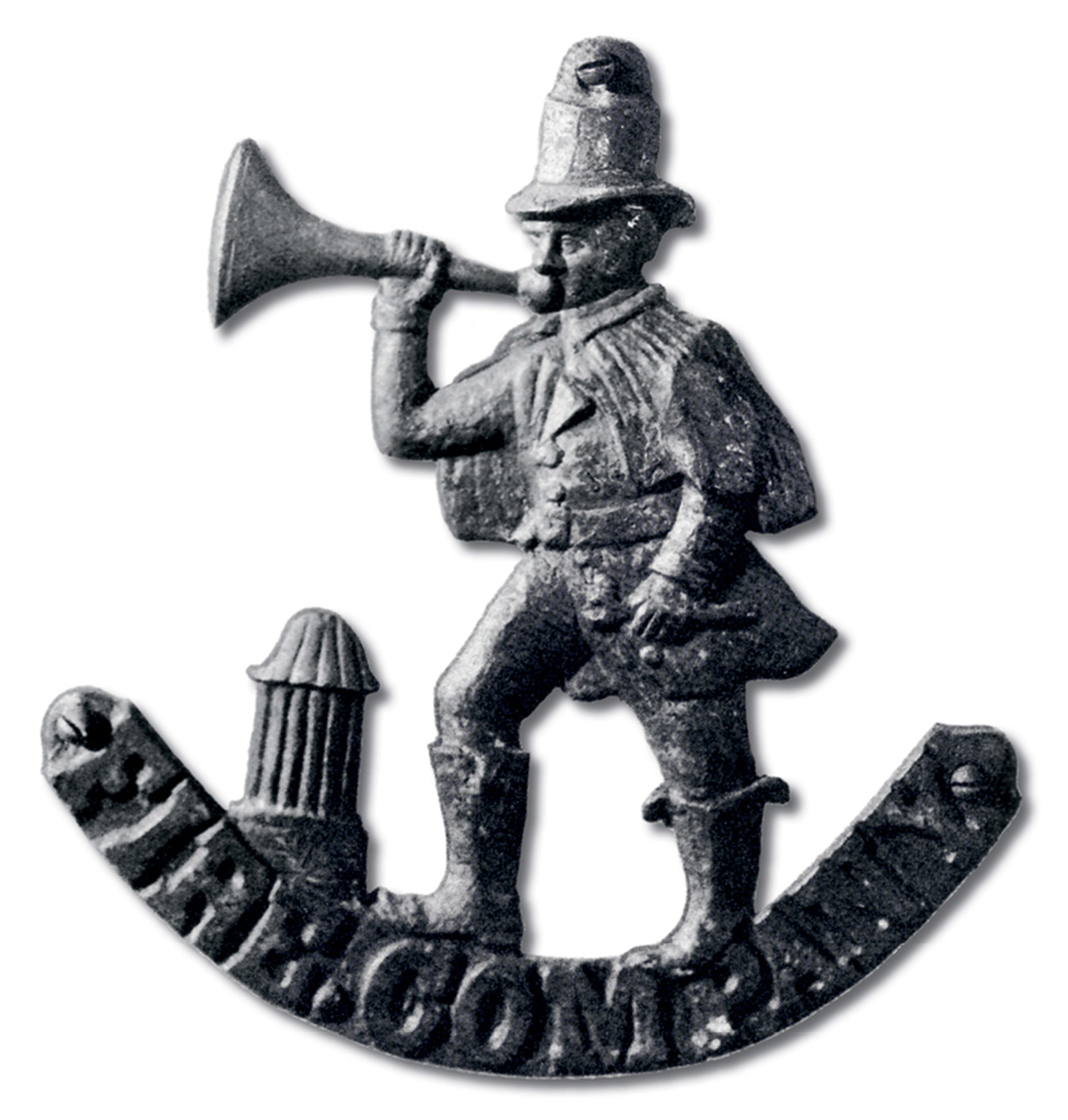
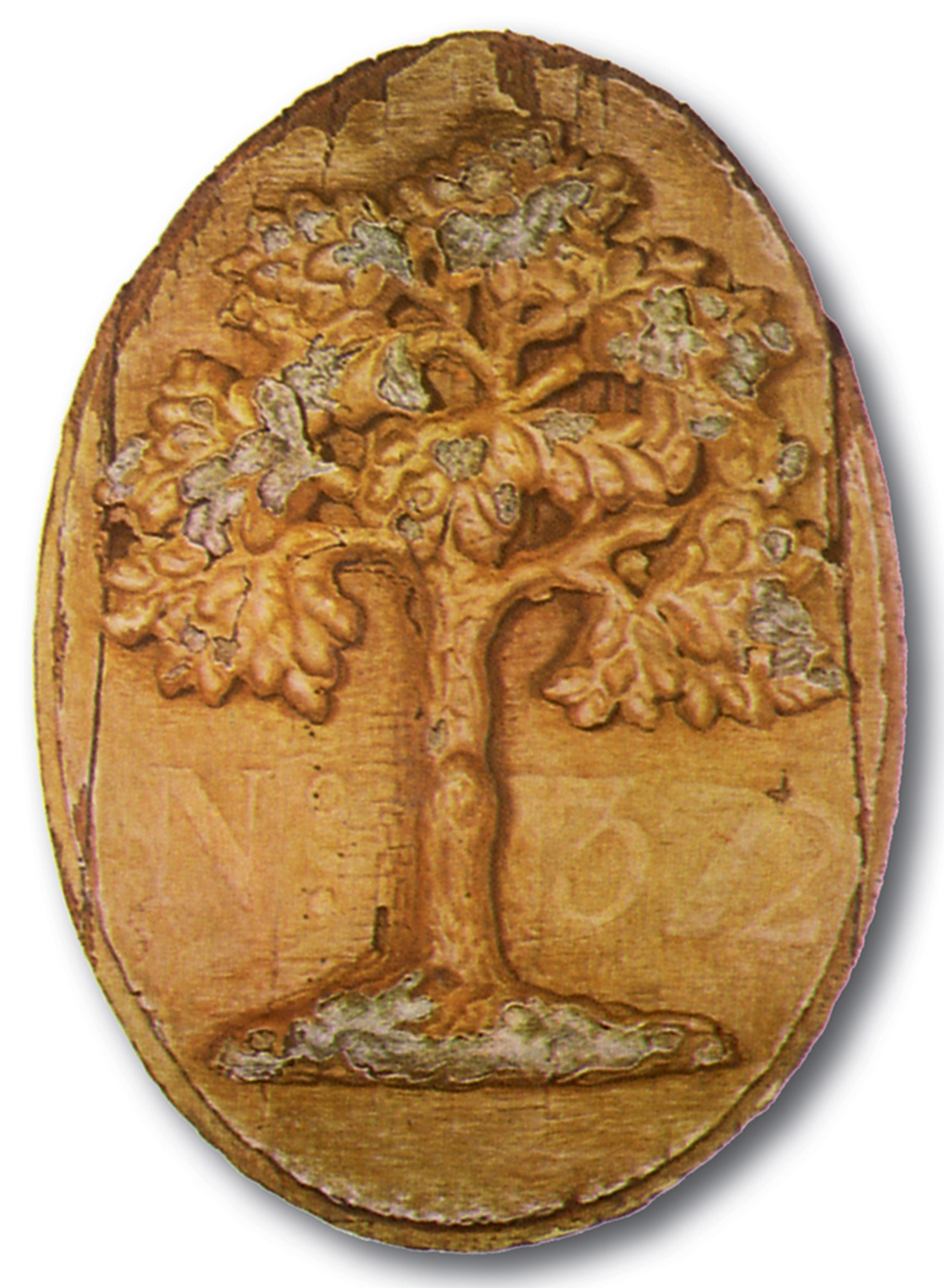
Though organized firefighting can be traced back at least to the vigiles, the watchmen who served as the public fire and police force of Imperial Rome, the practice of fighting fires remained a dangerously haphazard affair in European cities well into the seventeenth century. The Great Fire of London in 1666—perhaps the most infamous of all urban conflagrations, it destroyed nearly ninety percent of the medieval City between the Tower of London and Whitehall along the north bank of the Thames—threw the inadequacy of urban firefighting methods into stark relief. Attempts by the “Train-band,” or the local London militia, to fight the fire with leather buckets and small hand-operated syringes were complicated by the tinderbox of poorly constructed, largely wooden structures that crowded the area’s narrow streets and fatally compromised by the lack of any coordinated municipal plan for battling a blaze of such magnitude.
The enormous losses—even London’s great cathedral, St. Paul’s, succumbed; lead from its roof, wrote the diarist John Evelyn, was seen “mealting down the streetes in a streame”—led to new legislation in the form of the 1668 “Act for Preventing and Suppressing of Fires within the City of London and Liberties Thereof.” The twenty-eight point plan enjoined the citizens to refrain from keeping certain flammable materials in their homes and directed that the various companies of workmen across the city select individuals from their ranks “to be ready upon all occasions of Fire to attend the Lord Mayor and Sheriffs for quenching the flame.” But in practice the ad hoc staffing provided for in the Act did little to improve the quality of fire control in the city. Instead it was the creation of private fire brigades, charged not by the city nor seconded from the guilds but employed by the first firms of the nascent fire insurance industry, that changed the character of fire service in London and beyond.
Fire insurance is generally considered to be the invention of Nicholas Barbon, the son of the preacher and Cromwellian parliamentarian Praise-God Barebone (who burdened his heir with the extraordinary name Unless-Christ-had-died-for-thee-thou-hadst-been-damned Barebone). Trained as a physician, Barbon turned to land speculation in London in the immediate aftermath of the fire, and seeing the potential for a system by which individuals could protect their homes from future calamities, began offering a form of fire insurance as early as 1667. Although little evidence remains for Barbon’s one-man insurance shop in the years immediately following the Great Fire, by 1680 he had opened what is considered to be the first modern fire insurance company, The Fire Office. An advertisement published on May 12 of that year was placed “to give notice that the persons that propose to insure Houses from Fire do now attend at their office in Threadneedle Street, against The Exchange, every day from 9 to 12 in the morning and from 3 to 6 in the afternoon.” There, individuals could pay a standardized rate to cover the costs of repairing a home “Burnt down, Demolished, or otherwise damnified by reason of fire.” But because the best way to avoid having to pay off premiums was to prevent fire damage in the first place, the Fire Office went one step further, forming and outfitting its own private fire brigade.
Soon other insurance companies with their own private firefighting forces were founded as well, including the Friendly Society (1683), the Hand-in-Hand Fire and Life Insurance Company (1696) and the Sun Fire Office (1710). Dressed in the distinctive livery and regalia of their individual companies, these new breed of fire fighters were first and foremost charged with the protection of their firm’s properties. To distinguish these, they developed a system of affixing small metal plaques, or fire marks, bearing the symbol of the company to the exterior of the insured structures, a necessity given the tangle of unmarked houses that lined London’s many unnamed streets—for example, one insured home, policy no. 4536 of the Fire Office, is described in company records as being “[s]cituate on the South Side of Three Cupp Court also Castle Court between Newgate streete and Pater Noster Roe; now in the possession of John Mumriffe Coffeeman being the second Howse Westward from the South East end of the said Court and distant from them to the middle of the Howse about Thirty foote.”
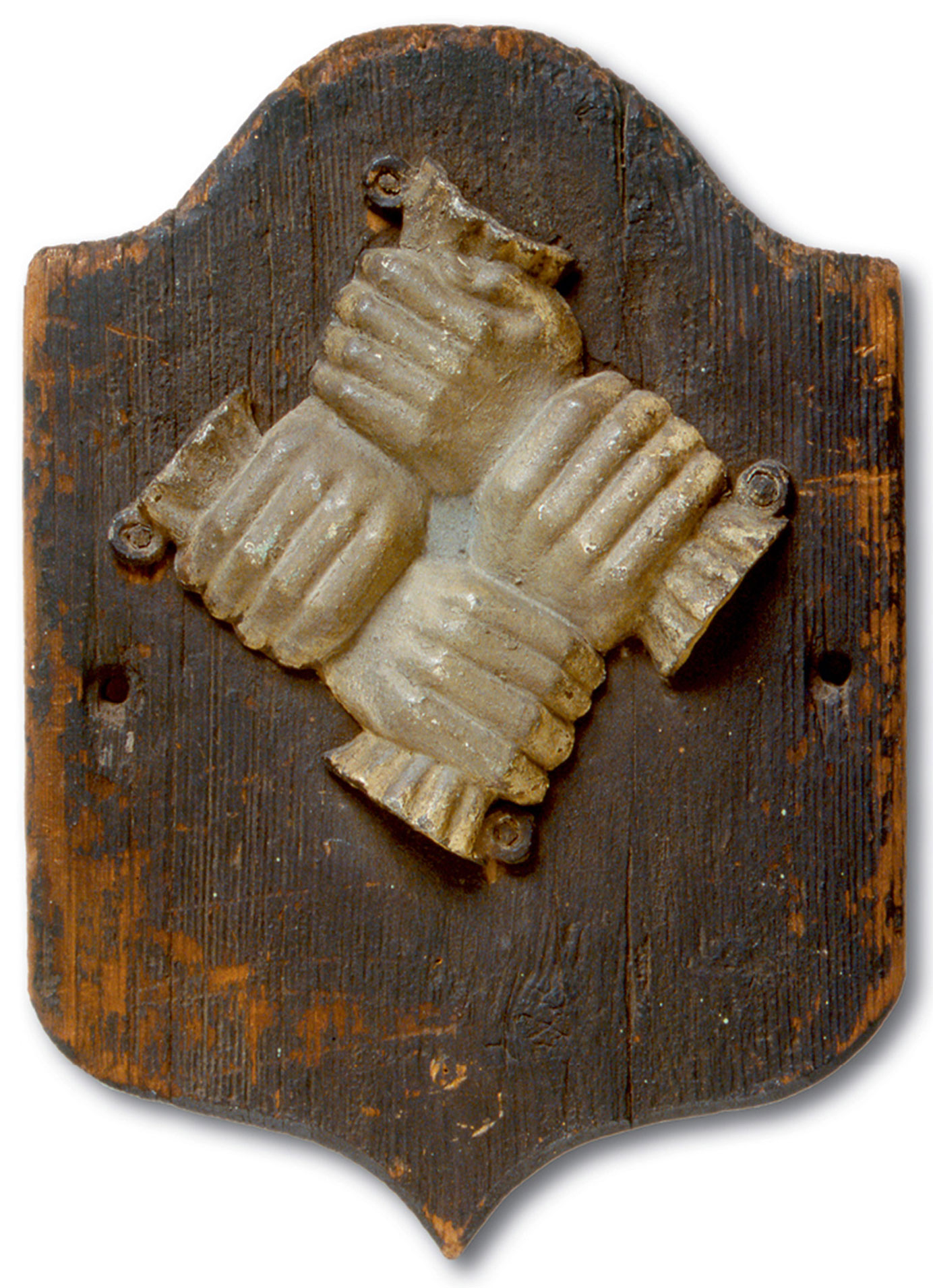
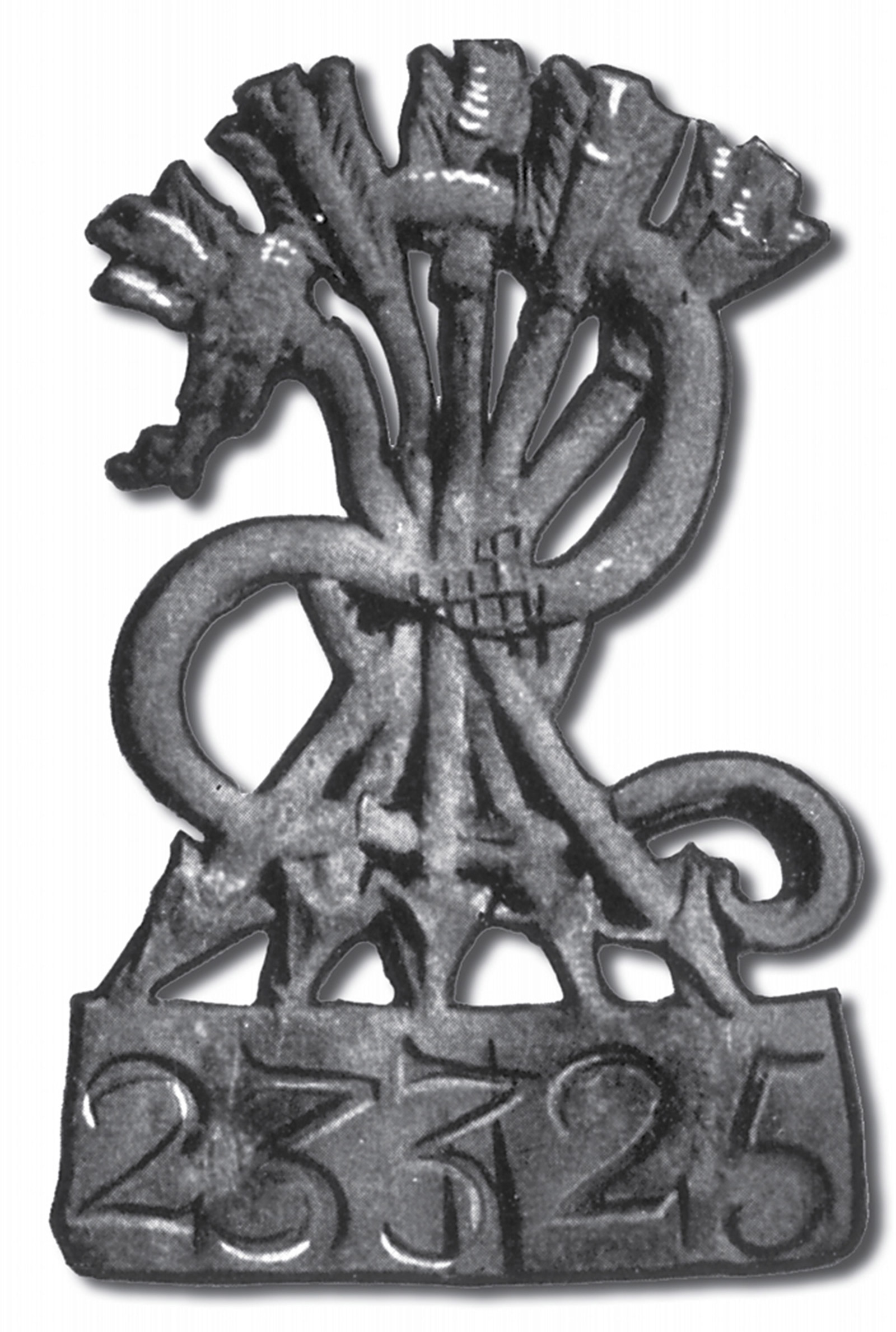
The individual designs for the various firms—a phoenix for the Fire Office; five arrows entwined by a snake for the Friendly Society; a handshake beneath a crown for the Hand-in-Hand; a sixteen-rayed Sol for the Sun—were not only a locating aid to firemen, they were also a form of advertising, symbols of the often fierce free-enterprise competition between the various companies. Indeed, stories circulated of fire brigades standing by while buildings not bearing their firm’s fire mark burned to the ground, though there were also many accounts of cooperation between the various firefighting units. By the end of the eighteenth century, the major fire companies of London had pooled resources, setting the stage for the formation in 1833 of the joint London Fire Engine Establishment, the private forerunner of today’s public London Fire Brigade.
By the beginning of the eighteenth century, the growing cities of colonial America were similarly in need of coordinated firefighting services. Unlike in England, however, the earliest American companies were not created through private enterprise, but rather were organized as volunteer groups which, because of the settlements’ relatively modest size and newness, were governed by a greater sense of shared responsibility and community spirit. By the end of the seventeenth century, both Boston and New York had well-established systems of community wardens charged with organizing public responses to fire and in 1736, Benjamin Franklin, who lamented “As to our Conduct in the Affair of Extinguishing Fires, tho’ we do not want Hands of Good-Will, yet we seem to want Order and Method,” organized the Union Fire Company, the first volunteer firefighting force in Philadelphia, which was by then well on its way to being colonial America’s largest city. In this environment, private insurance companies were not created to help fight fires, but instead to simply help rationalize the costs stemming from fire damage.
The first recorded fire insurance firm in the US was the Friendly Society of Charleston, South Carolina, established in 1735. But it was short-lived, going bankrupt after a disastrous fire that burned over three hundred houses, along with stables, warehouse, and wharves, in November of 1740. Within a decade, however, Franklin had begun conceiving his own fire insurance firm and in 1752 he founded the Philadelphia Contributionship for the Insurance of Houses from Loss by Fire with a group of prominent local citizens. Like its English forerunners, the Contributionship also adopted the practice of affixing a fire mark—in its case, a sign depicting four hands clasped and crossed—to the structures it insured. But whereas in London the private nature of the firefighting companies meant that there was a potential disincentive to put out fires at buildings insured by other firms, in the American system the various firefighting companies, as they became increasingly professionalized over the following decades, would vie (and occasionally even come to blows with each other) to extinguish a blaze and earn a resulting payment from the insurer.
The Contributionship remained America’s only fire insurance company through the years of the Revolutionary War (though it did suspend its practice of affixing lead fire marks to insured houses during those years, melting down those on hand to be cast into bullets for the Continental Army). It wasn’t until 1784 that a rival emerged, when a group of the Contributionship’s members, angered by the firm’s demand that owners of insured houses cut down all trees on their sidewalks, left to form their own firm, the Mutual Assurance Company. In a small echo perhaps of the spirit of sharp-elbowed competition that governed the emergence of the first fire marks, the upstart new concern chose for its identity an image that symbolized the point of contention between it and its well-established competitor: a green tree.
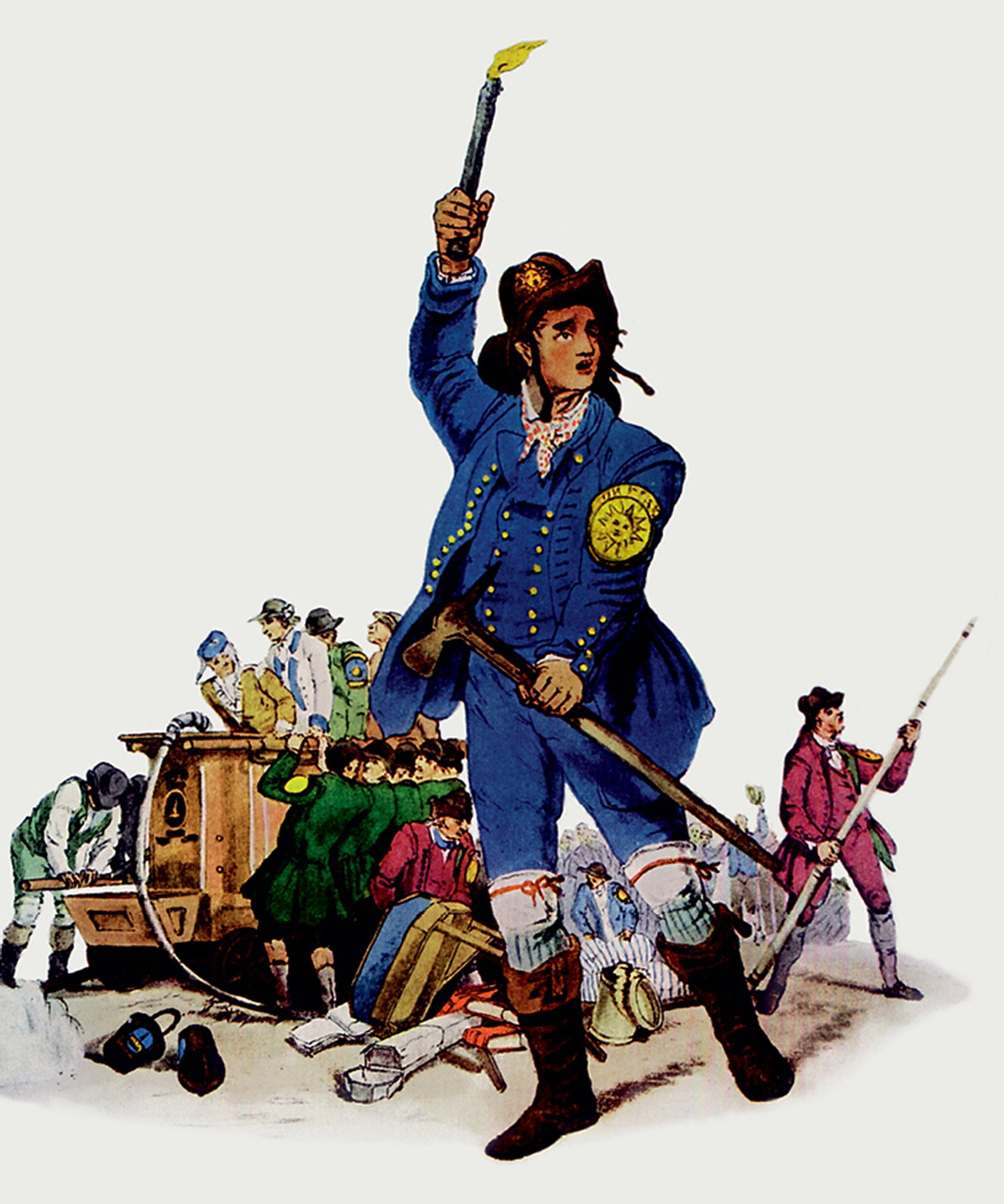
Janet Connelly is a Brooklyn-based writer currently working on the history of fire insurance in Europe and the US.